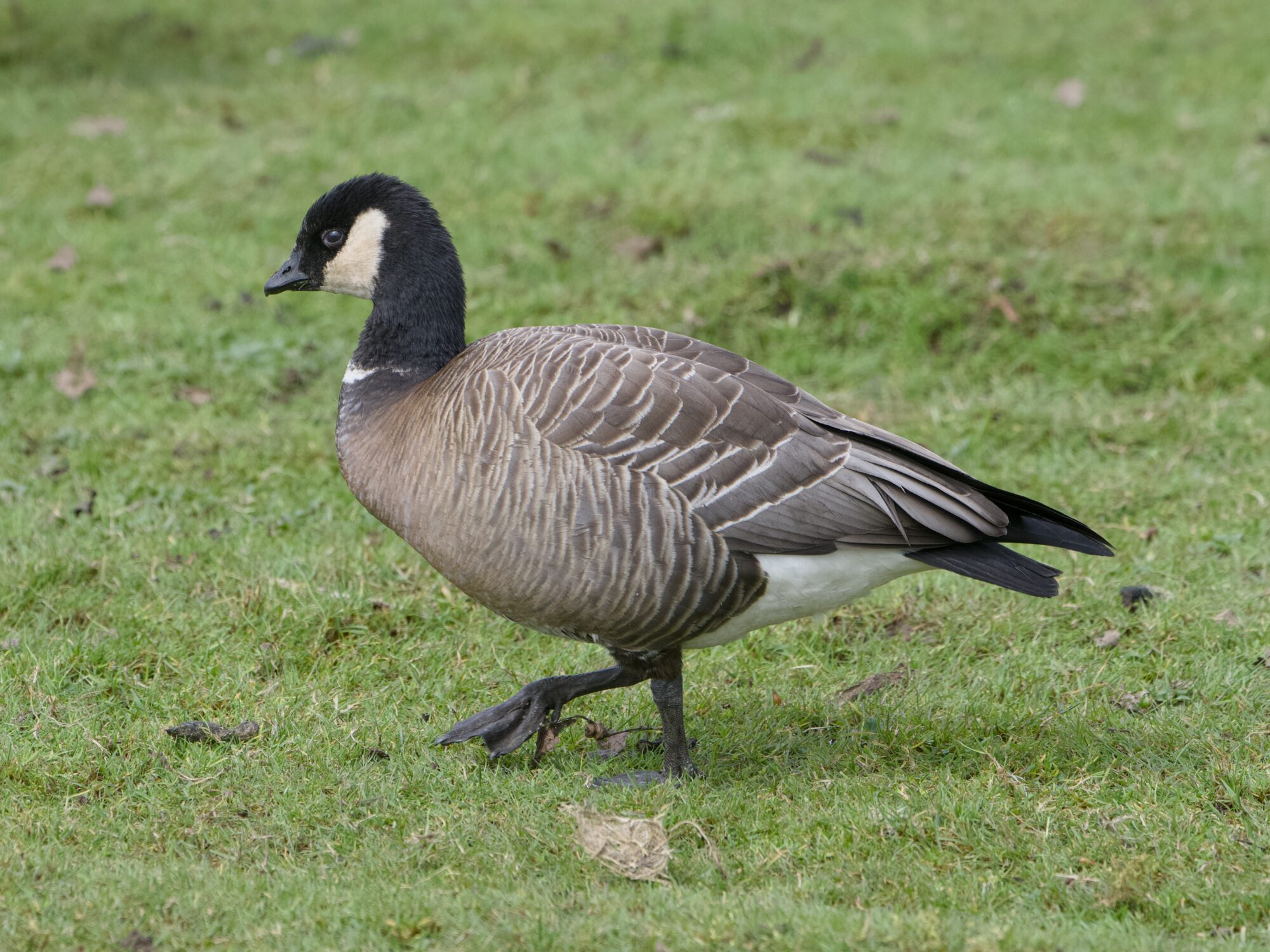I visited Reifel twice, on April 5 and 12. Let’s break these visits down by species, why not!
Tree Swallows
These sleek, shiny little dudes are back and settling into their nest boxes! Still no Barn Swallows yet, but I figure they’re not far behind.
I took some pretty good photos of them in flight last summer, and I solemnly vow to do so again, just better. I can always get better!

American Wigeons
I love these guys, and they’re so common it’s easy to take glamour shots. I love this one in particular because it seems some of the head feathers stand on end when they peep. It’s so cute!

Now, this gal’s chest and side seem unusually dark. the consensus is that maybe she’s got a bit of Eurasian Wigeon in her, but “maybe” is the best we got. The rest of her seems to be pretty standard American.
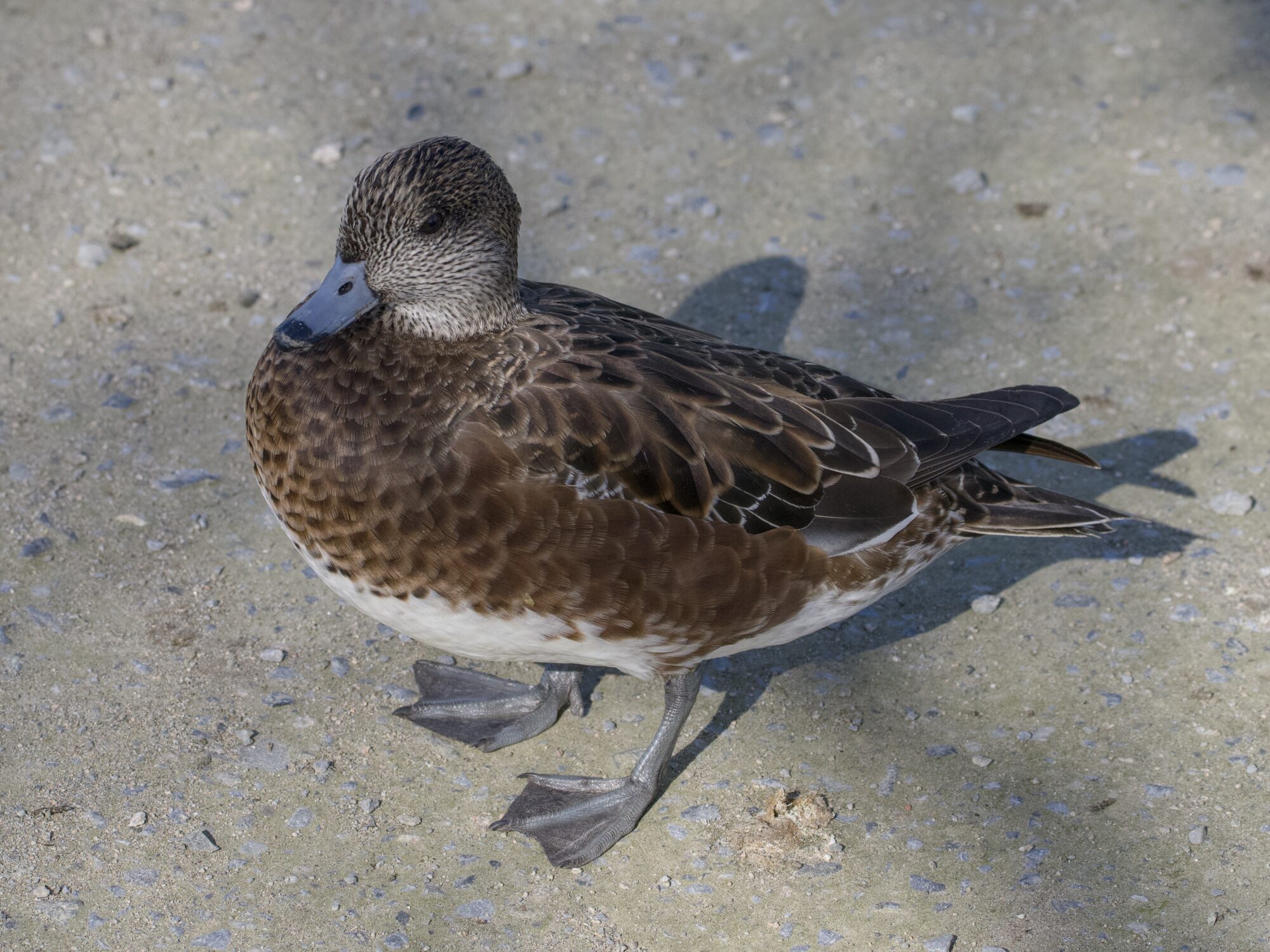
Golden-crowned Sparrows
As numerous as ever, and it looks like the first-year chicks are all going through their final moult to get their adult colours! Look at the last one pictured, tucked away almost out of sight near the viewing tower. But there’s no need to be self-conscious, I think this weird intermediate marbley pattern of black and gold is really snazzy!
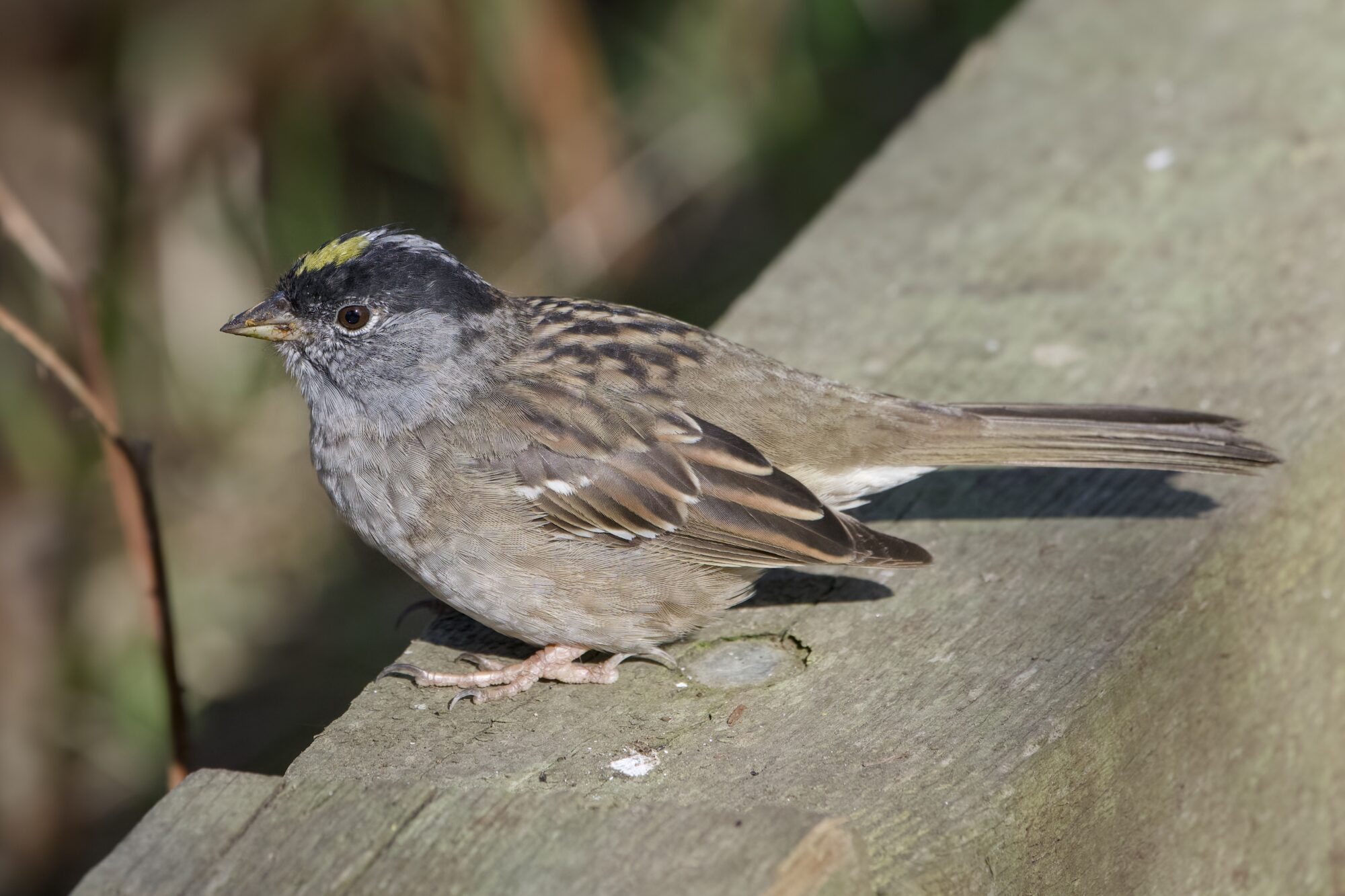
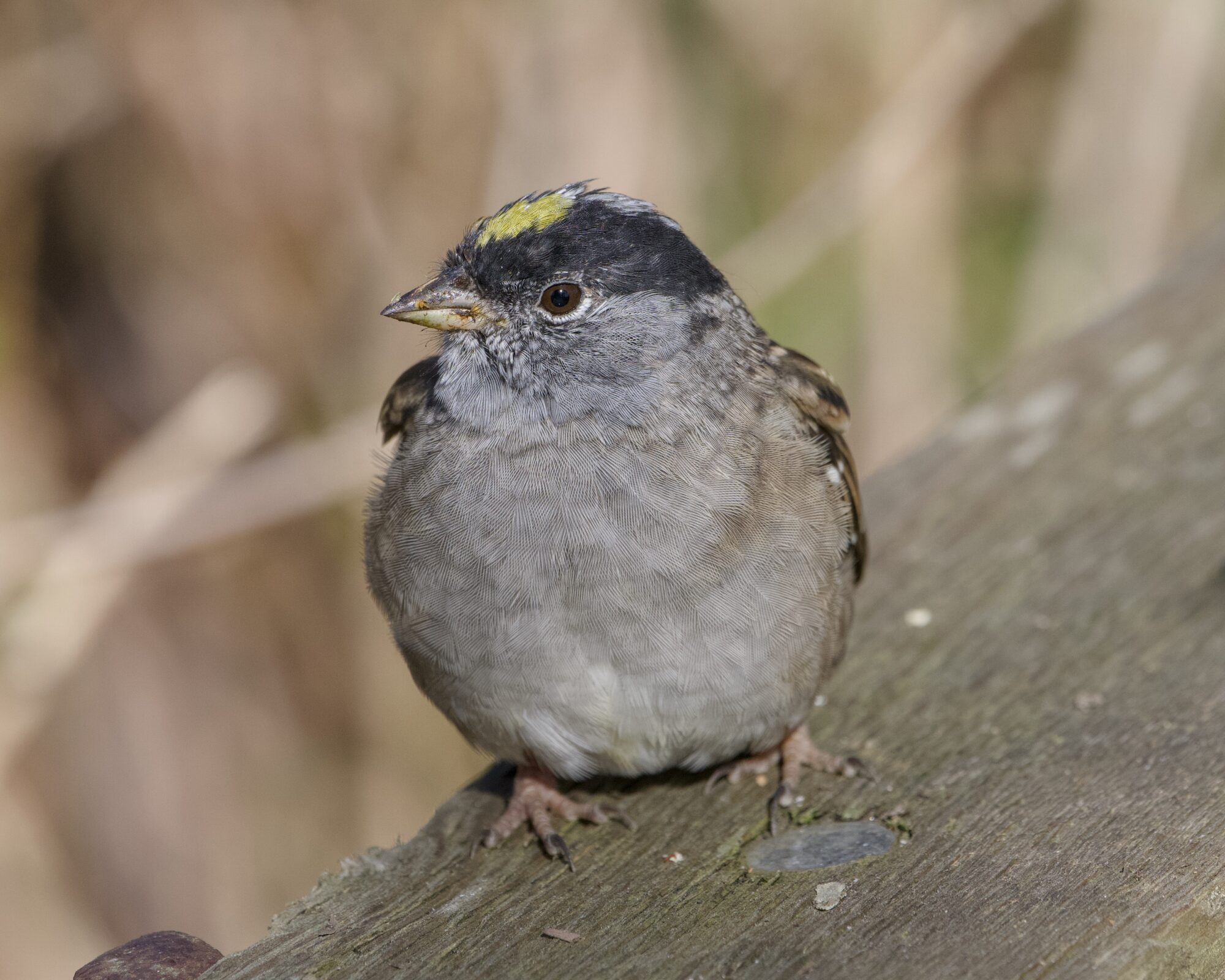
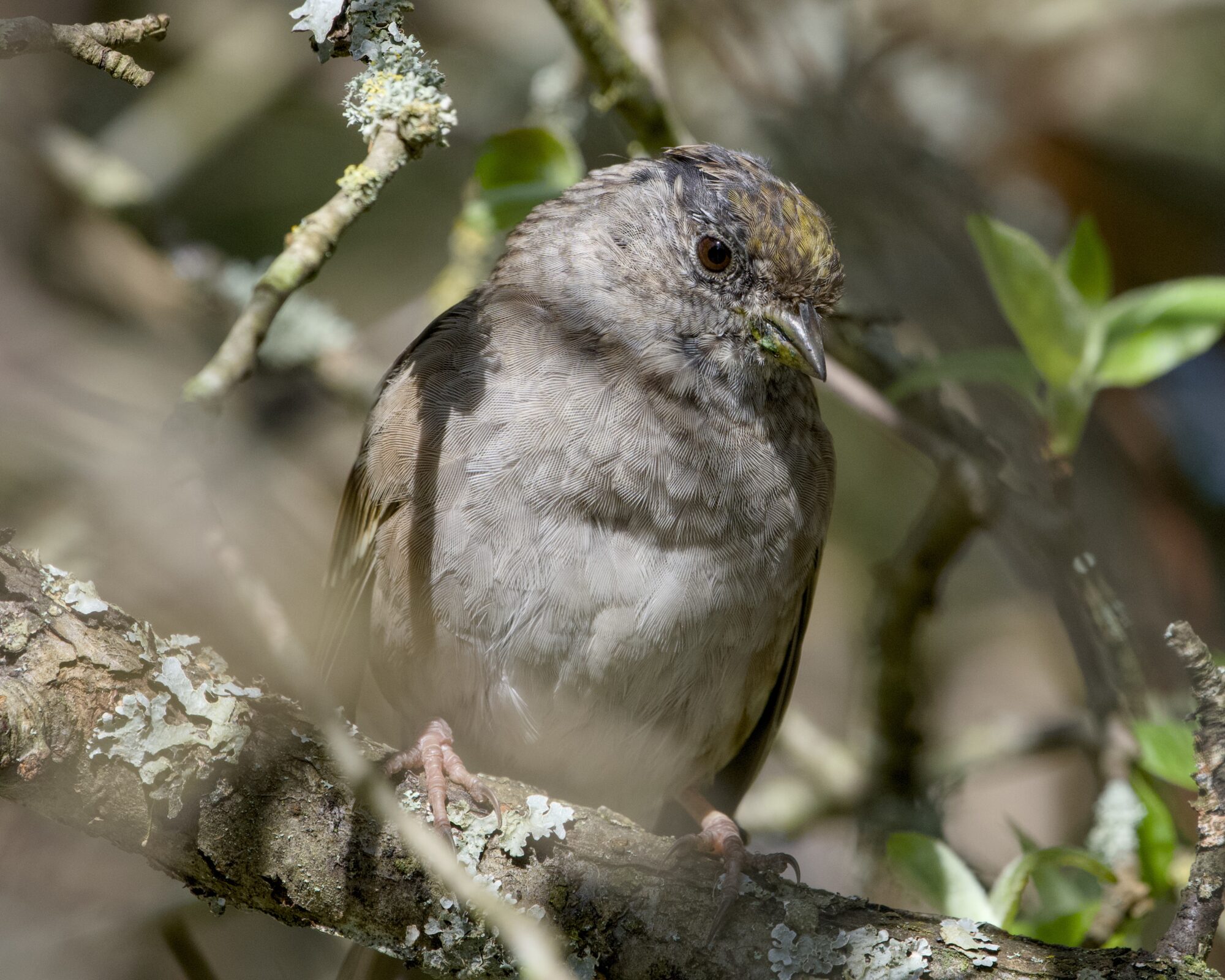
Red-winged Blackbirds
The blackbirds were doing their blackbird things — mainly begging for food, and screaming for the ladies while flexing. And… maybe this one was helping to build a nest? That would definitely explain the white fluff stuck to various parts of him.

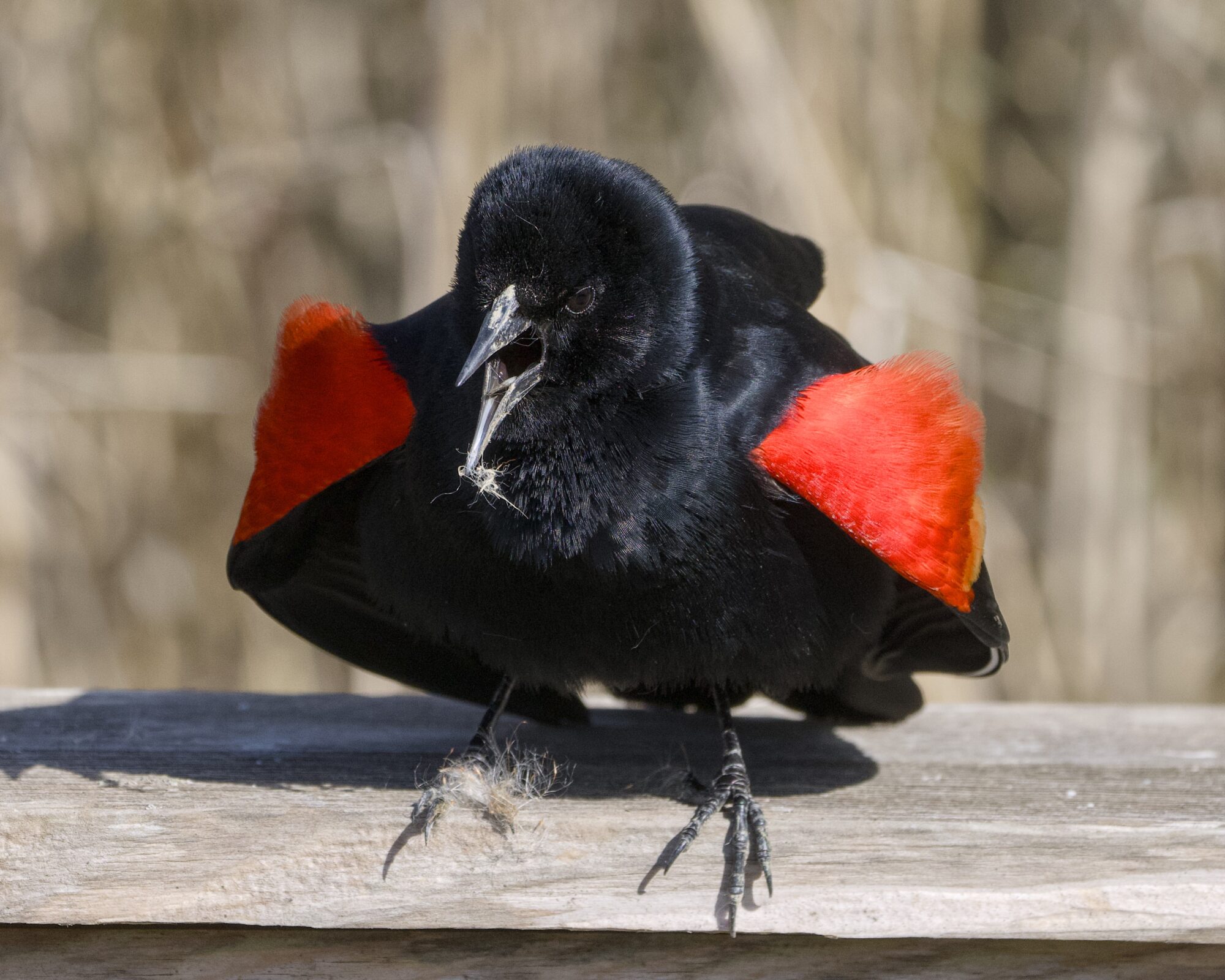
Golden-crowned Kinglets
A few kinglets, as per usual. Either there are more of them, or I’m getting better at picking them out as they zip through the foliage.
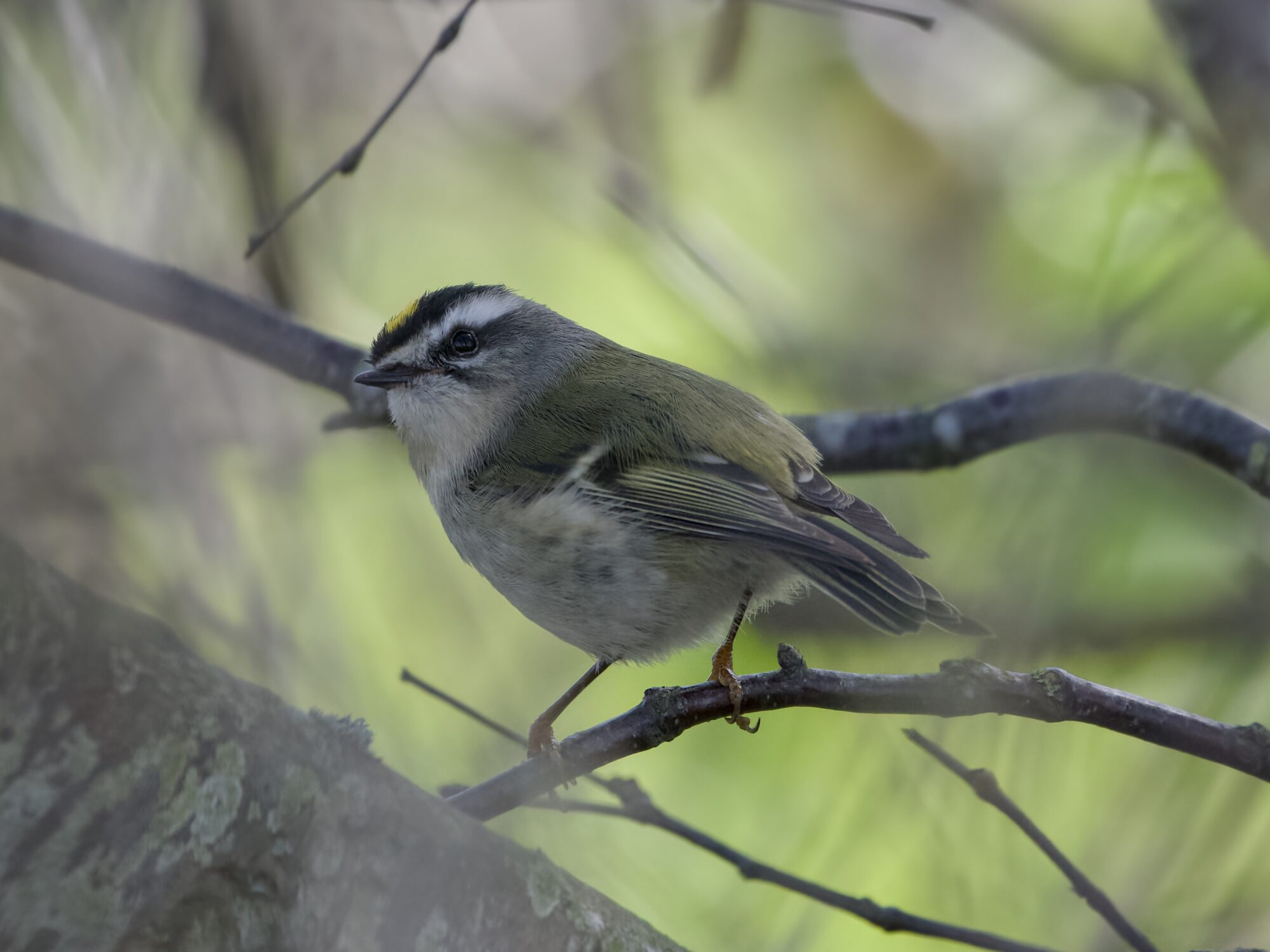
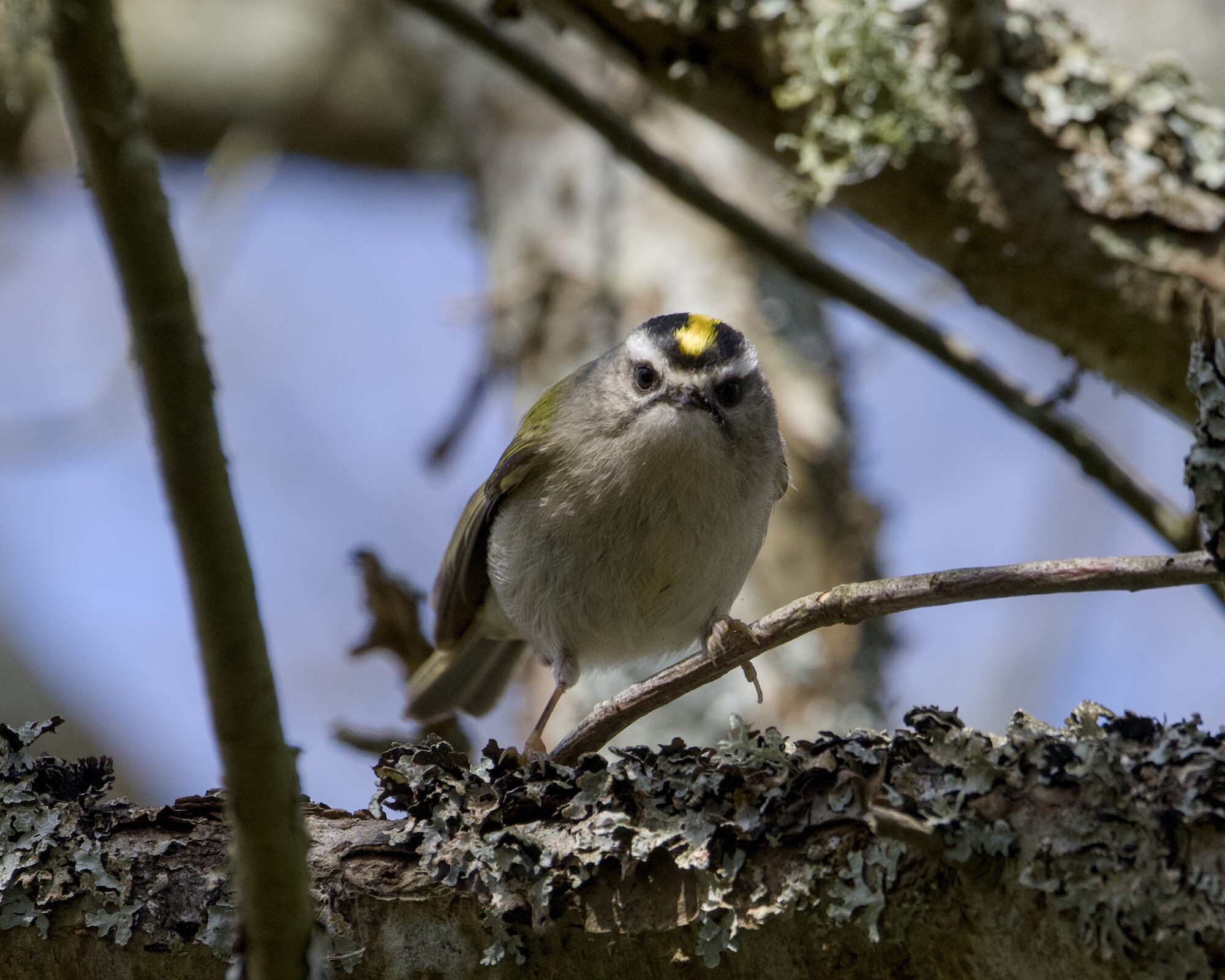
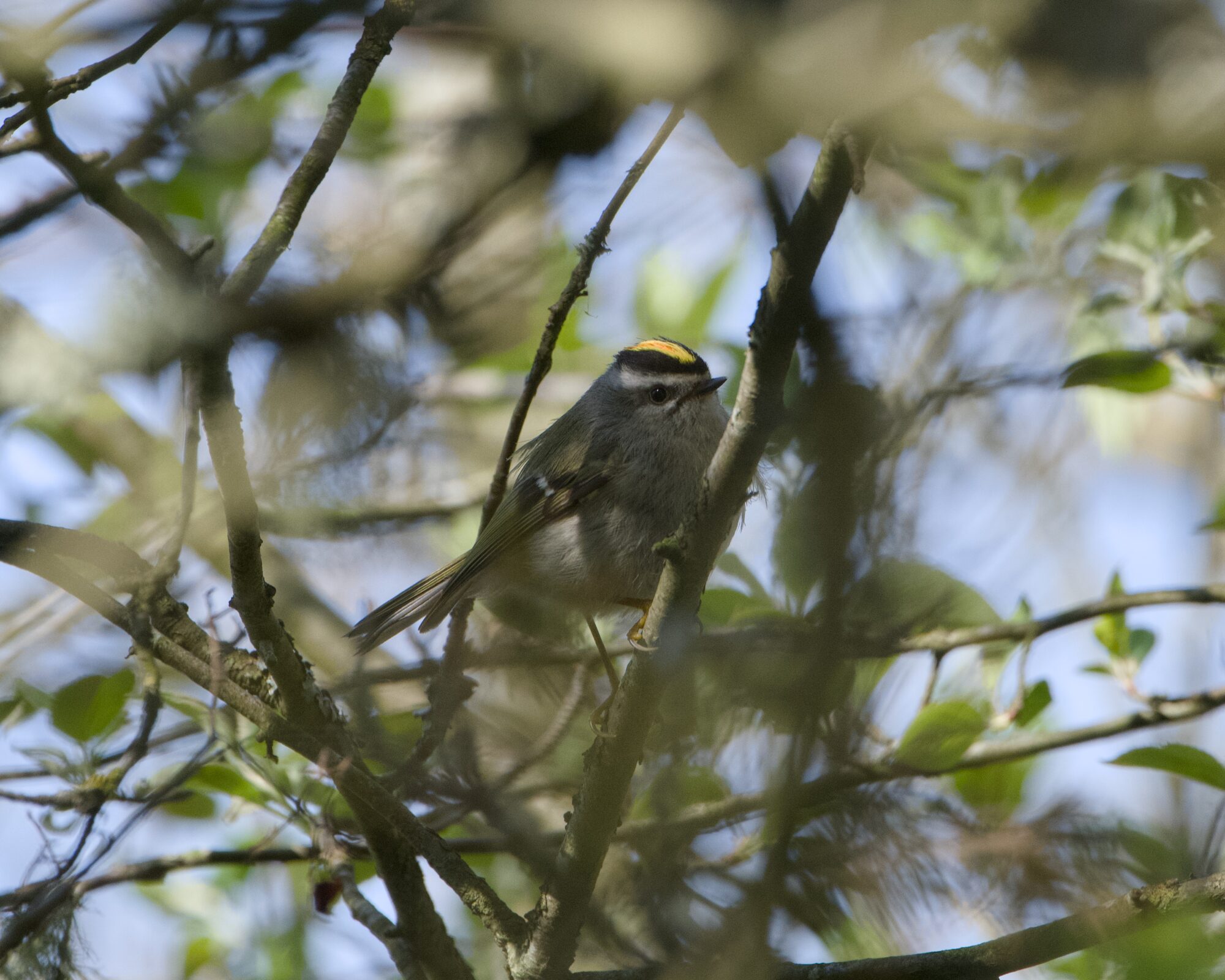
Marsh Wrens
I was lucky to find a few less-shy specimens! One kept ducking in and out of sight in the hedges along the west dyke trail, but stayed in sight enough for me to get a couple good pics. And one, some distance away from the trail and “hiding” behind a branch to belt out its songs. Oh well, I guess with wrens, you take what you can get.
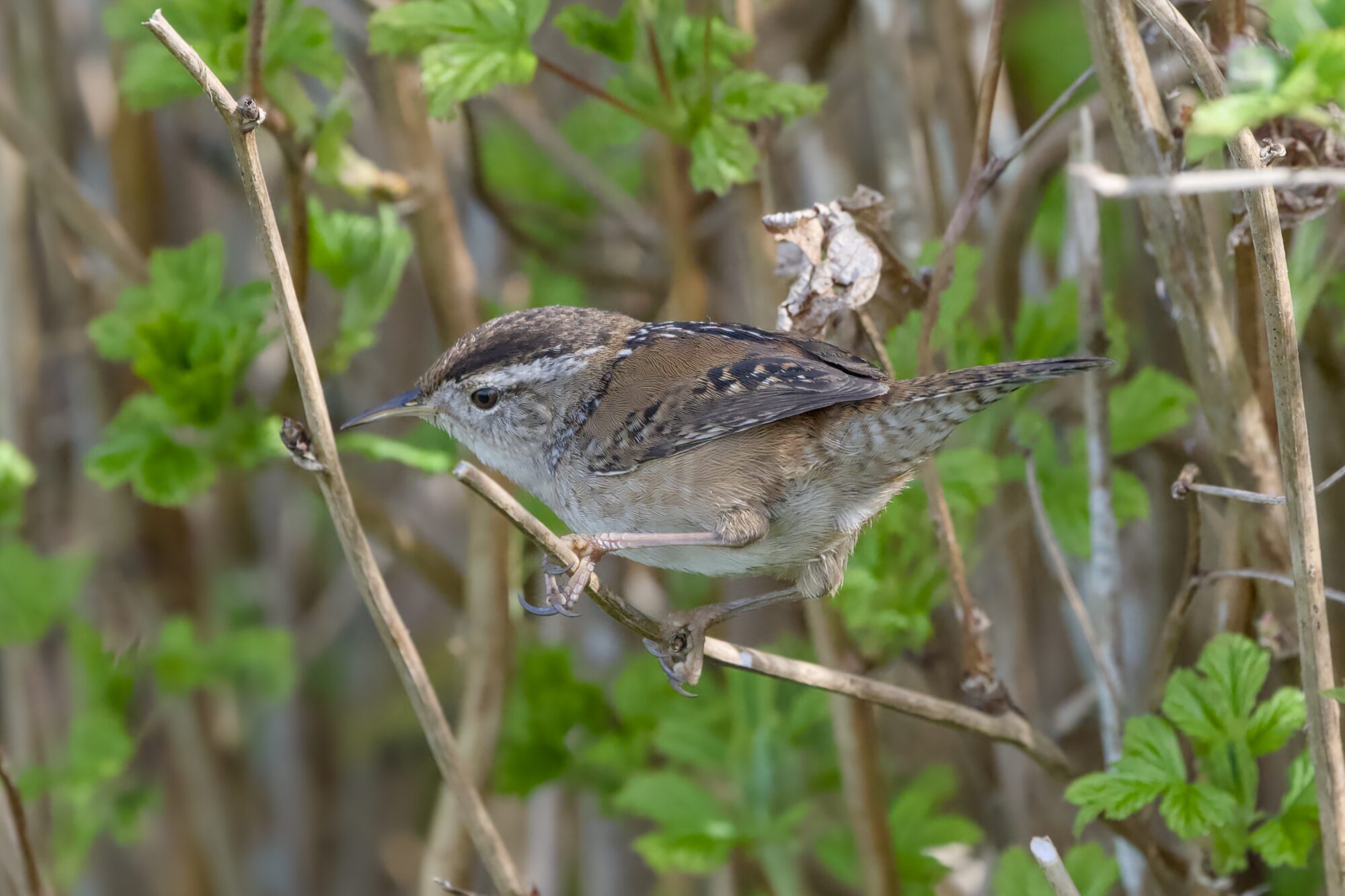

Ring-necked Ducks
For some reason I’m usually not happy with my ring-neck pictures. Either the light is a little off, or the focus, or something. This one though? This one I like! The little beads of water on his back, and that weird toupee kind of thing. Apparently they’re in the same genus (Aythya) as Tufted Ducks, which would explain the similar hairdos. Also scaups, which would explain the similar outfits.
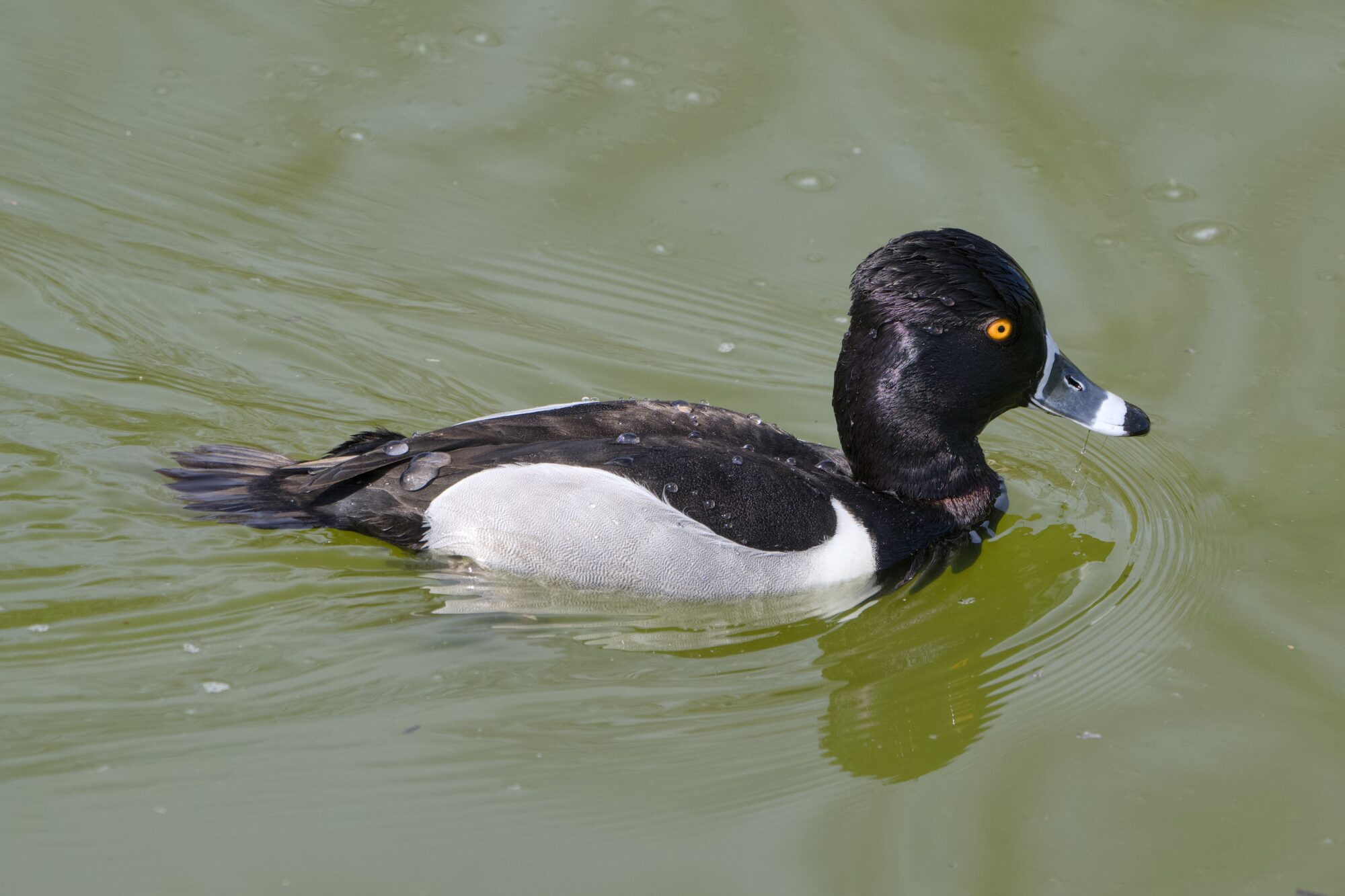
Sandhill Cranes
During both visits I focused on closeup portraits. They’ve got such fascinating features! And I love how the remaining colt is growing up. Its red mask is almost as vivid as its parents’, and we just need its eyes to change.
(Incidentally, I’m still boggled at how some birds have different eye colours based on age or sex!)
In the first pic, taken on April 5, the adult’s beak is coated in red-brown mud that it used to daub all over its back, The mud stains its feathers semi-permanently, which makes for great camouflage during nesting season.
That day, the first-year colt was wandering around on its own, which was new: not just to me but to it as well, and it was being super sad and loud. I later learned the parents had laid an egg, and were taking turns sitting on it, which explains why they shoo’d out the kid, and also explains why I only saw one at a time.
However, as I also learned, they carelessly left the egg unattended too long, and it got nabbed by some predator. There’s still time for another clutch, but in the meantime, the family is wandering the grounds together again.

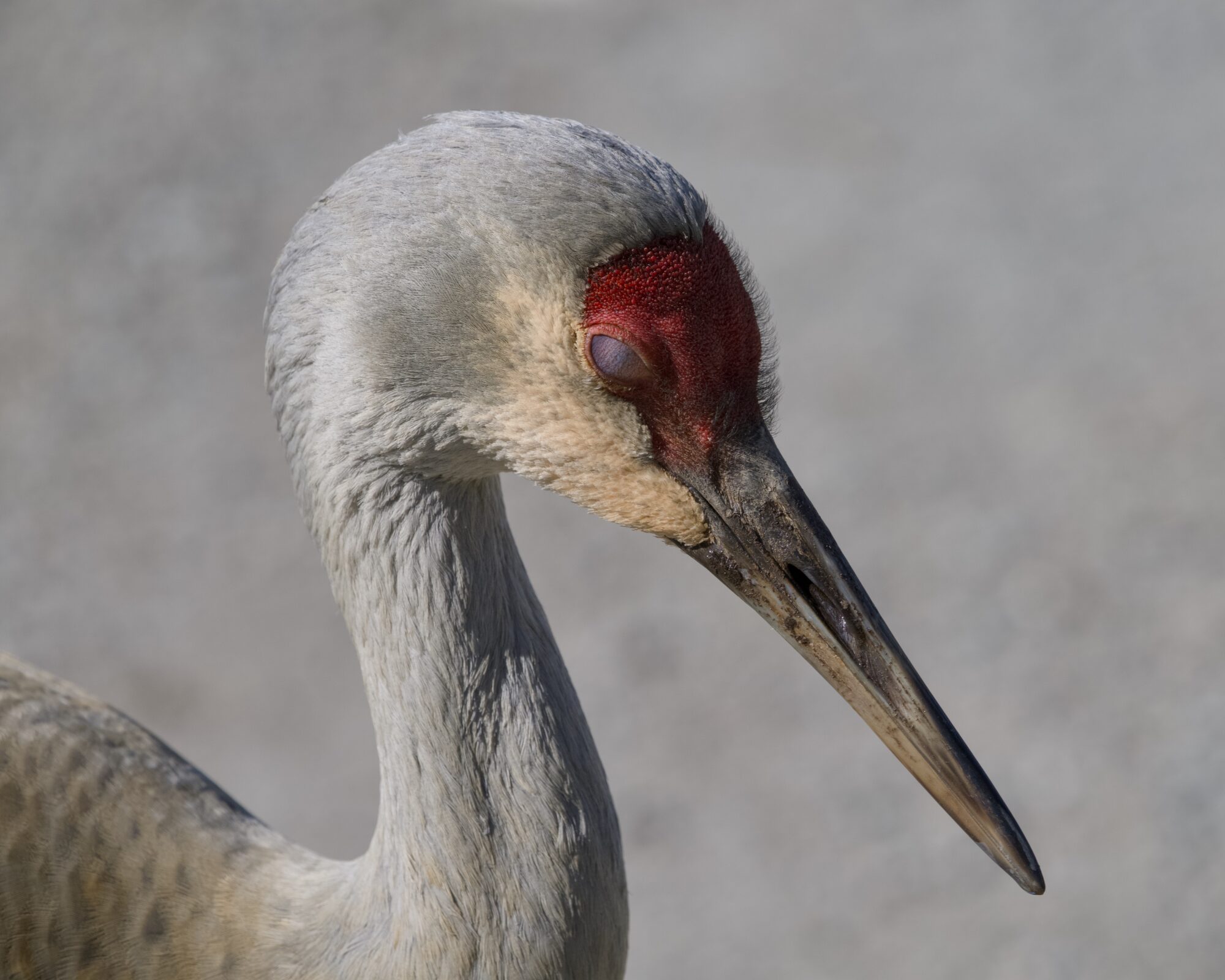
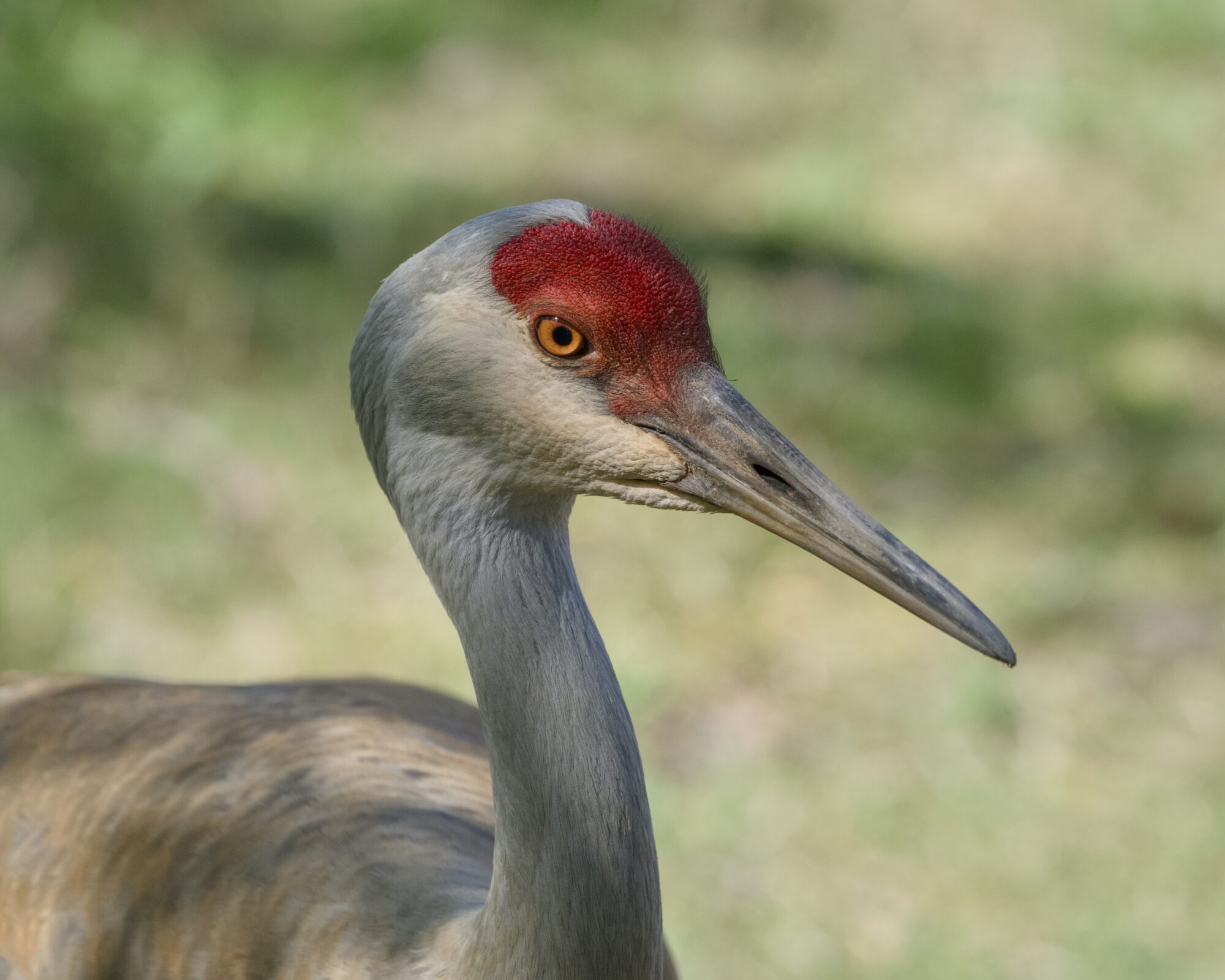
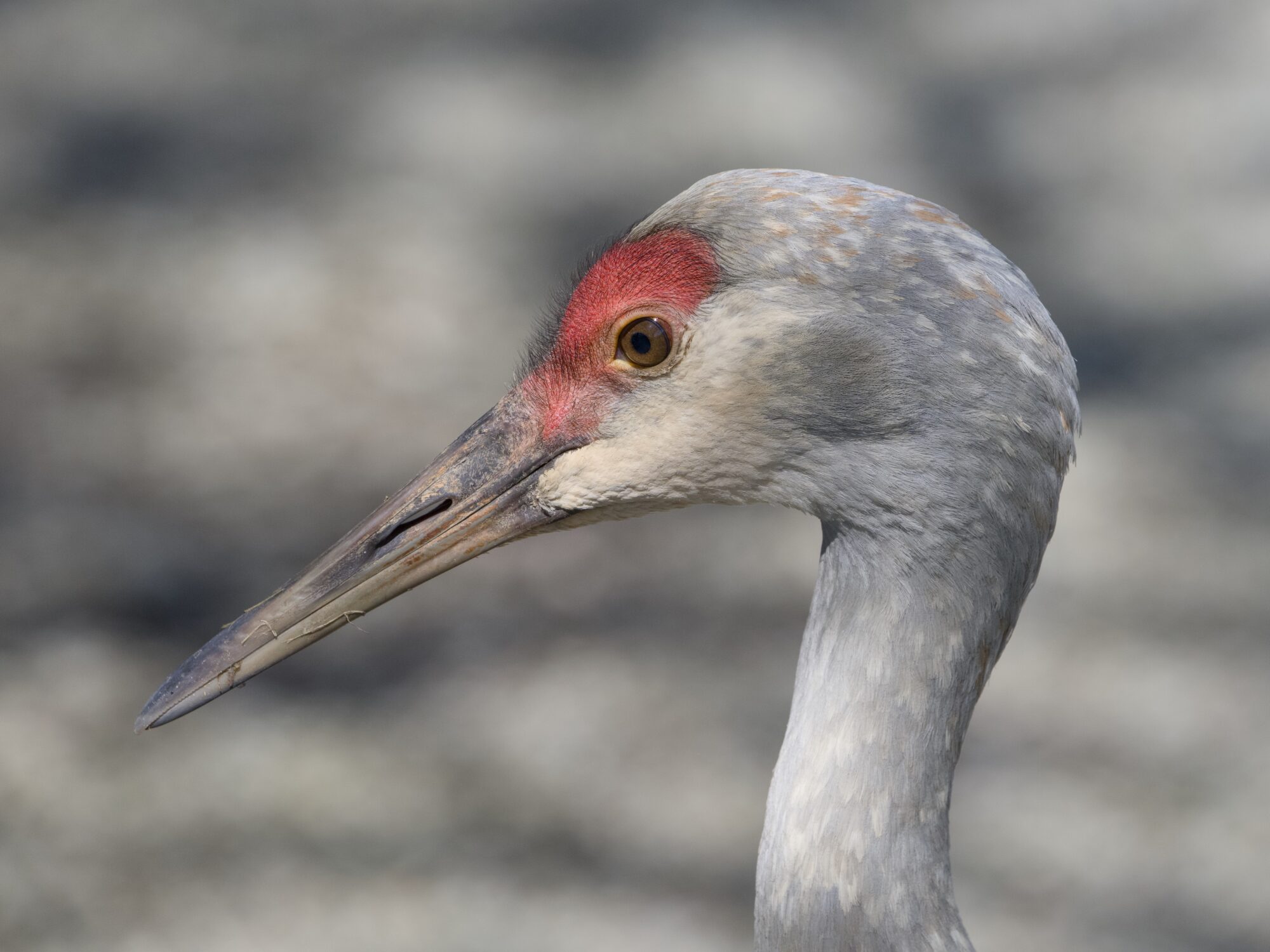
Cackling Geese
Swinging by the west end of Burnaby Lake, we saw Cackling Geese. And not just a few, but a whole gaggle — maybe fifty in total. It’s possible they’re migrating from further south on the coast, headed to… well, as north as you can get, apparently! Their breeding grounds are along the northern shores of our ginormous continent, plus a bit of Baffin Island. Now that’s a journey.
